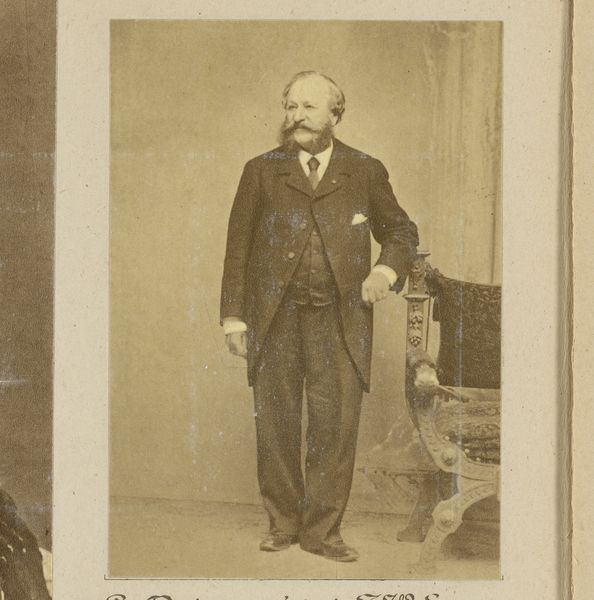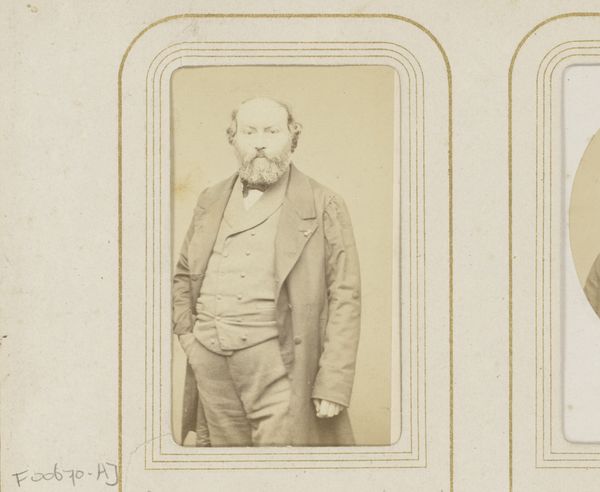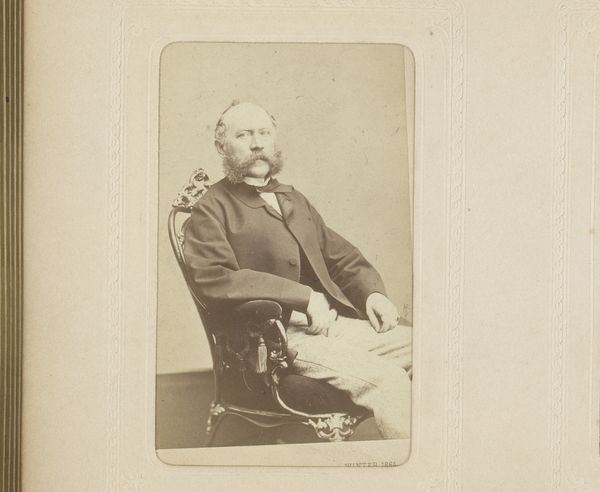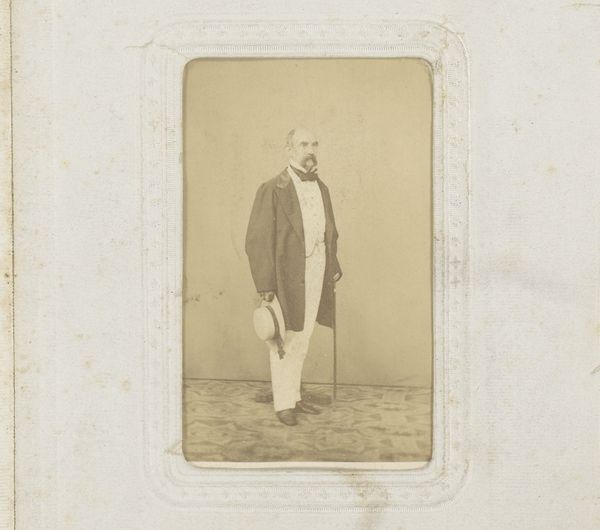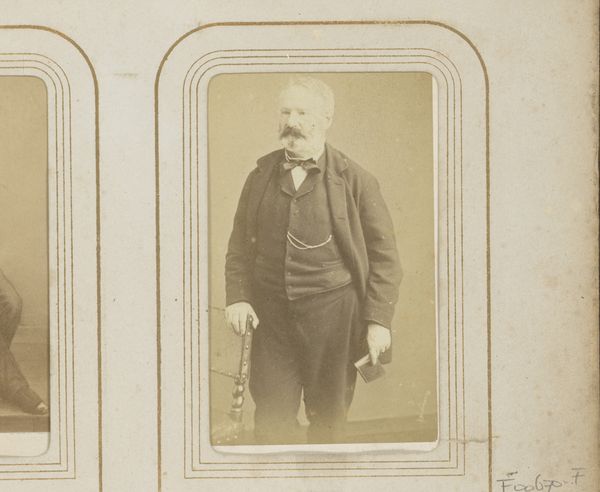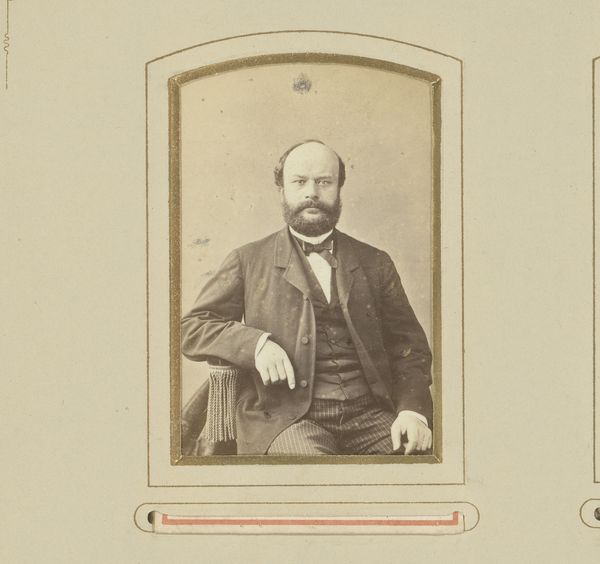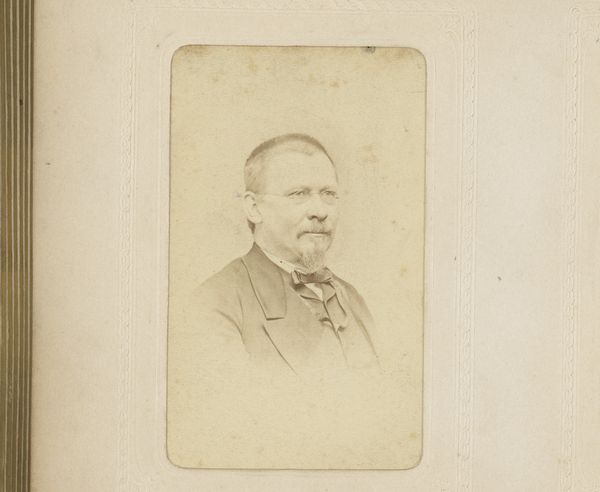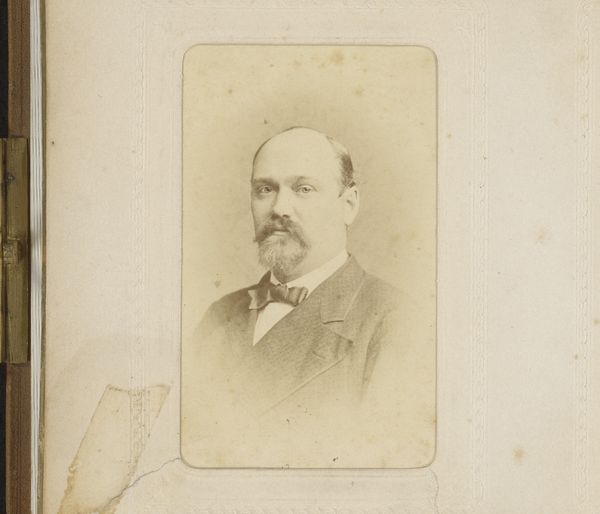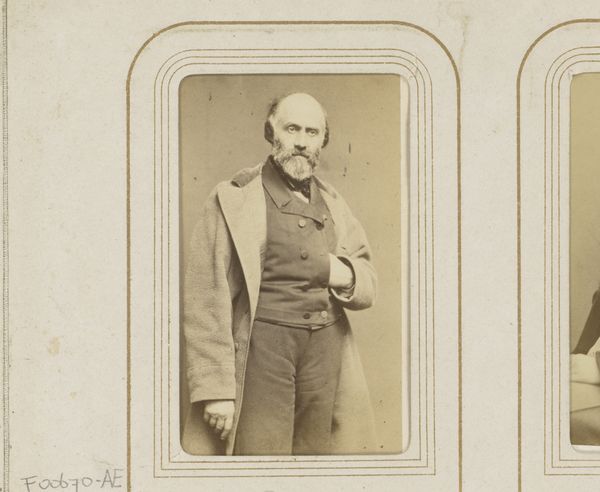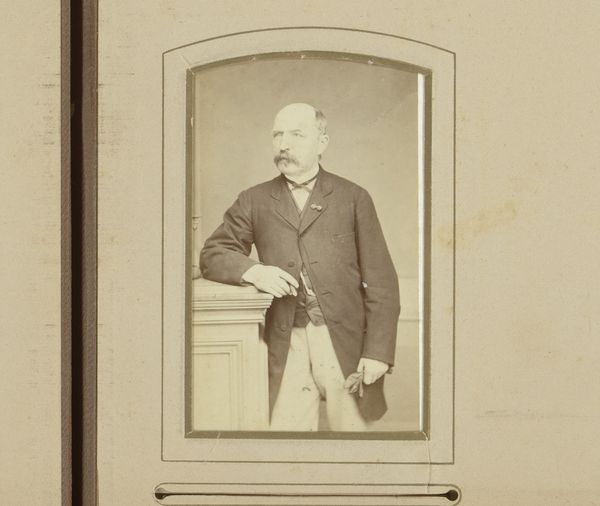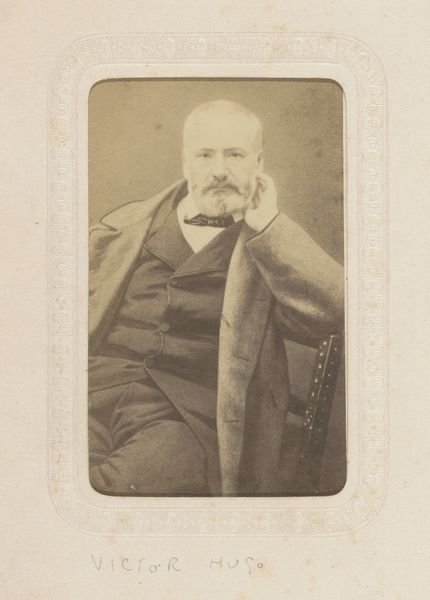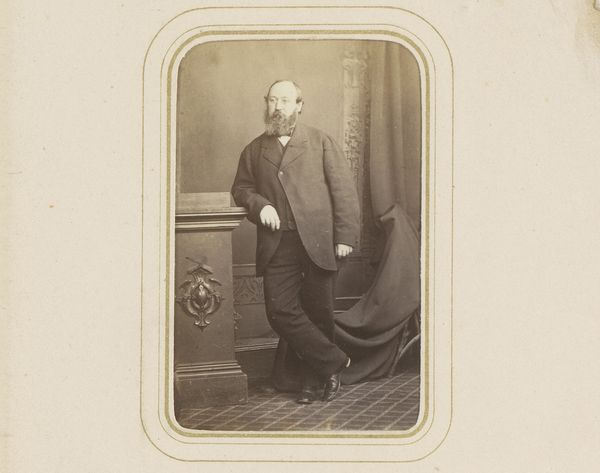
photography, gelatin-silver-print
#
portrait
#
photography
#
historical photography
#
gelatin-silver-print
#
19th century
#
realism
Dimensions: height 84 mm, width 51 mm
Copyright: Rijks Museum: Open Domain
This is a portrait of a man made by George Lodewijk Mulder using a photographic process. In this portrait, we see not only the sitter, but also the technologies of representation that came to dominate the nineteenth century. Photography, like other reproductive technologies, relied on the division of labor. From lens grinding to the mixing of chemicals, from the operation of the camera to the printing of the final image, many hands were involved. And of course, a crucial part of the equation was the textile industry: note the sitter's striped suit, a clear marker of his status as a man of means. Mulder's portrait exemplifies how the photographic process became intertwined with broader social issues of labor, politics, and consumption. It invites us to consider the amount of work involved not only in the photographic process itself, but also in the production of the sitter's clothing and the creation of the social and economic conditions that made such portraits possible. By focusing on materials, making, and context, we can better understand the full meaning of this artwork.
Comments
No comments
Be the first to comment and join the conversation on the ultimate creative platform.
